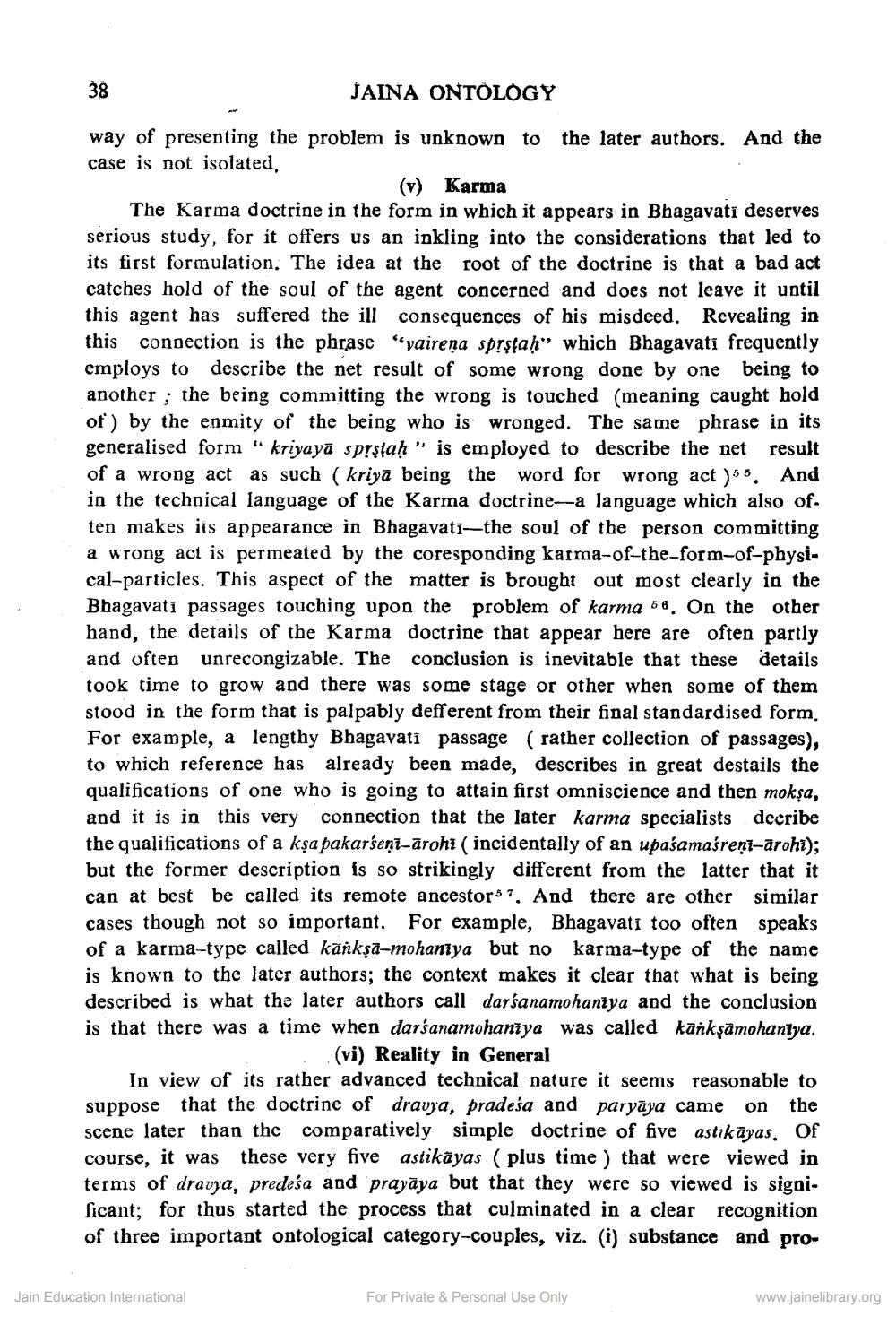________________
38
JAINA ONTOLOGY
way of presenting the problem is unknown to the later authors. And the case is not isolated,
(v) Karma The Karma doctrine in the form in which it appears in Bhagavati deserves serious study, for it offers us an inkling into the considerations that led to its first formulation. The idea at the root of the doctrine is that a bad act catches hold of the soul of the agent concerned and does not leave it until this agent has suffered the ill consequences of his misdeed. Revealing in this connection is the phrase "vairena sprştah" which Bhagavati frequently employs to describe the net result of some wrong done by one being to another; the being committing the wrong is touched (meaning caught hold of) by the enmity of the being who is wronged. The same phrase in its generalised form "kriyayā sprstah” is employed to describe the net result of a wrong act as such (kriyā being the word for wrong act). And in the technical language of the Karma doctrine-a language which also of. ten makes its appearance in Bhagavati--the soul of the person committing a wrong act is permeated by the coresponding karma-of-the-form-of-physical-particles. This aspect of the matter is brought out most clearly in the Bhagavati passages touching upon the problem of karma 58. On the other hand, the details of the Karma doctrine that appear here are often partly and often unrecongizable. The conclusion is inevitable that these details took time to grow and there was some stage or other when some of them stood in the form that is palpably defferent from their final standardised form. For example, a lengthy Bhagavati passage (rather collection of passages), to which reference has already been made, describes in great destails the qualifications of one who is going to attain first omniscience and then mokşa, and it is in this very connection that the later karma specialists decribe the qualifications of a kșa pakaršeni-ārohi ( incidentally of an upaśamaśreņi-arohi); but the former description is so strikingly different from the latter that it can at best be called its remote ancestors 7. And there are other similar cases though not so important. For example, Bhagavati too often speaks of a karma-type called känkșa-mohaniya but no karma-type of the name is known to the later authors; the context makes it clear that what is being described is what the later authors call darśanamohaniya and the conclusion is that there was a time when darśanamohanīya was called kankşamohantya.
(vi) Reality in General In view of its rather advanced technical nature it seems reasonable to suppose that the doctrine of dravja, pradeśa and paryāya came on the scene later than the comparatively simple doctrine of five astıkāyas, of course, it was these very five astikayas (plus time that were viewed in terms of dravja, predeśa and prayāya but that they were so viewed is signi. ficant; for thus started the process that culminated in a clear recognition of three important ontological category-couples, viz. (i) substance and pro
Jain Education International
For Private & Personal Use Only
www.jainelibrary.org




